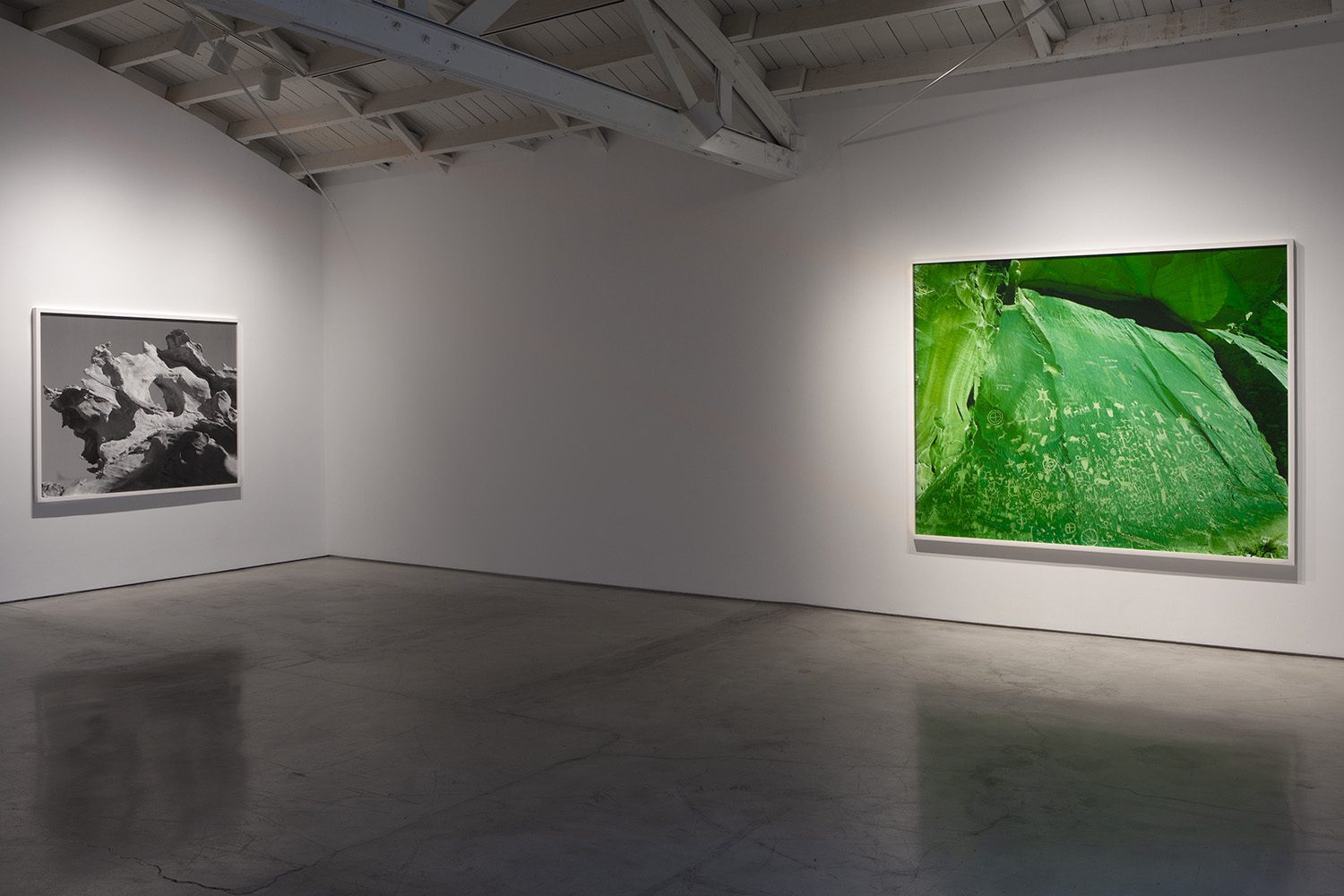
Installation view
Monuments, 2018
Photograph courtesy of Morán Morán
David Benjamin Sherry Monuments
The gallery’s fourth exhibition with David Benjamin Sherry, titled Monuments, continues his decade-long practice that builds social documentary into the creation of sweeping, majestic Western vistas. Sherry’s new, large-scale photographs invite a complex discussion of territorialism and land use, ownership, and preservation. In this exhibition, queer ecology and the history of photography fuse together into a monumental experience, both visually tranquil and emotionally dramatic.
The revivification and radicalization of the colonial history of American landscape photography—which, ironically, is gorgeous and irresistibly romantic—is David Benjamin Sherry’s objective in Monuments, presenting five photographs that feature scenes from National Monuments. By celebrating and honoring the environmental ethic, kinship with wilderness, and formal mastery of pre-digital, film-based, darkroom photography popularized by Edward Weston, Minor White, Ansel Adams, and Robert Adams, Sherry keeps this heroic tradition alive by communing with far-flung forests and deserts to locate compositions that he transforms into sublime images. But his relationship to these forefathers stops there; his practice conceptually centers itself in education and rejection of perpetuating the corrupt political history of the American West, whose legends of freedom are fabricated from stolen lands which have been consistently abused and destroyed.
This series features images of the Trump administration’s final list of National Monuments whose protected status will be violated to be sold in interest of coal extraction, uranium mining, and oil drilling. While some photographs depict areas slated for imminent development (Muley Point I, Bears Ears National Monument, Utah, 2018), some portray areas that may not be immediately at risk (Rio Grande Gorge, Rio Grande National Monument, New Mexico, 2018). In selecting this suite of images, Sherry preferred to commemorate the experience of visiting these remote, sacred, ecologically significant places, choosing to conceptually embody the whole monument and embrace the fact that “what’s safe today may not be safe tomorrow.”
The monochrome printing process Sherry has developed is very much his own. He developed it after mastering natural or straight color printing, achieved through the study of color theory and understanding the powerful effect color can have on a viewer. After spending years devoted to black and white photography, he created the monochrome color in his work as a parallel to the black and white process, while even incorporating the zone system. The artist creates a monochrome hue by using varying degrees on the Cyan-Magenta-Yellow dials on his enlarger. He pushes the color without losing image quality to achieve the hue that he pre-visualized the moment he took the photograph. He has amassed an archive of color test-strips as a kind of reference guide for the system he developed for conveying an emotional response. For Sherry, monochrome color and black-and-white photography are siblings because of their “abstraction from reality through highlighting form, light and composition.”
Although humans are absent in these photos, Sherry builds queer narrativity into both the process and product via his queer subjectivity. With this environmental work, he aims to disrupt prevailing, institutionally entrenched understandings of nature and sexuality through principles of ecofeminism. He considers travel for these pictures to be a tool in understanding the queer experience as he navigates through rural spaces and communities not traditionally considered safe for queer people. Interconnectedness between identity and the Earth becomes Sherry’s poetic call for liberation from the patriarchal power structure that has controlled and abused our public lands. While these photographs grapple with a grim political circumstance, they paradoxically exude an adventurous, near-psychedelic reverence through his use of color and form: they represent liberation, independence, resistance, and self-determination. “The photo is a vehicle for talking about identity,” says Sherry. By co-opting the formal language and traditional practices of his predecessors, while imbuing his finished product with his queer aesthetic and agenda, Sherry presents us with a radical new perspective of the West.
Dates
September 08 - October 27, 2018Opening Reception
Saturday, September 08, 6-8pmLocation
937 N. La Cienega Blvd.Los Angeles, CA 90069
Artist
David Benjamin Sherry
Installation Views
All images: Monuments, 2018. Photography courtesy of Morán Morán
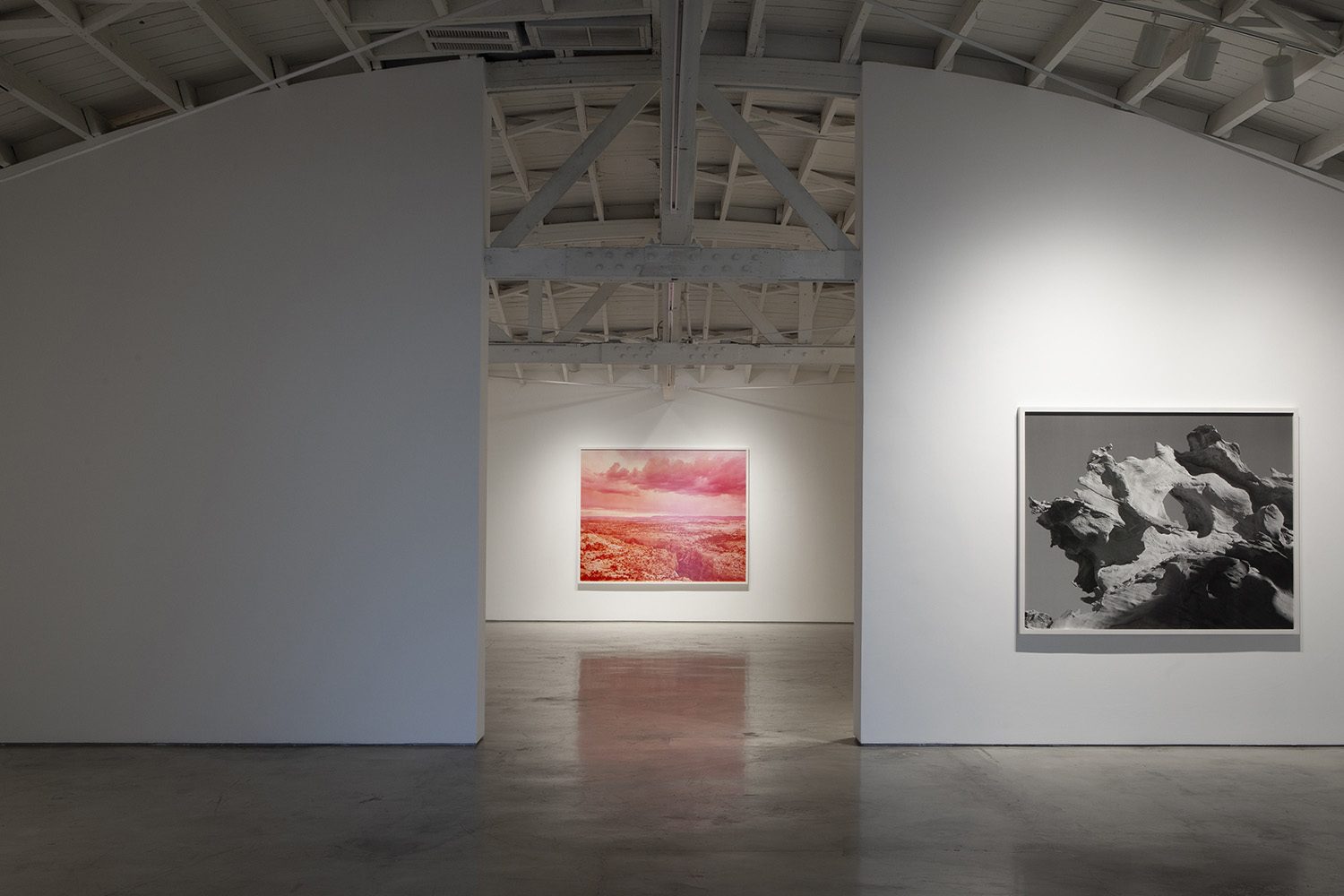
Installation view
Monuments, 2018
Photograph courtesy of Morán Morán
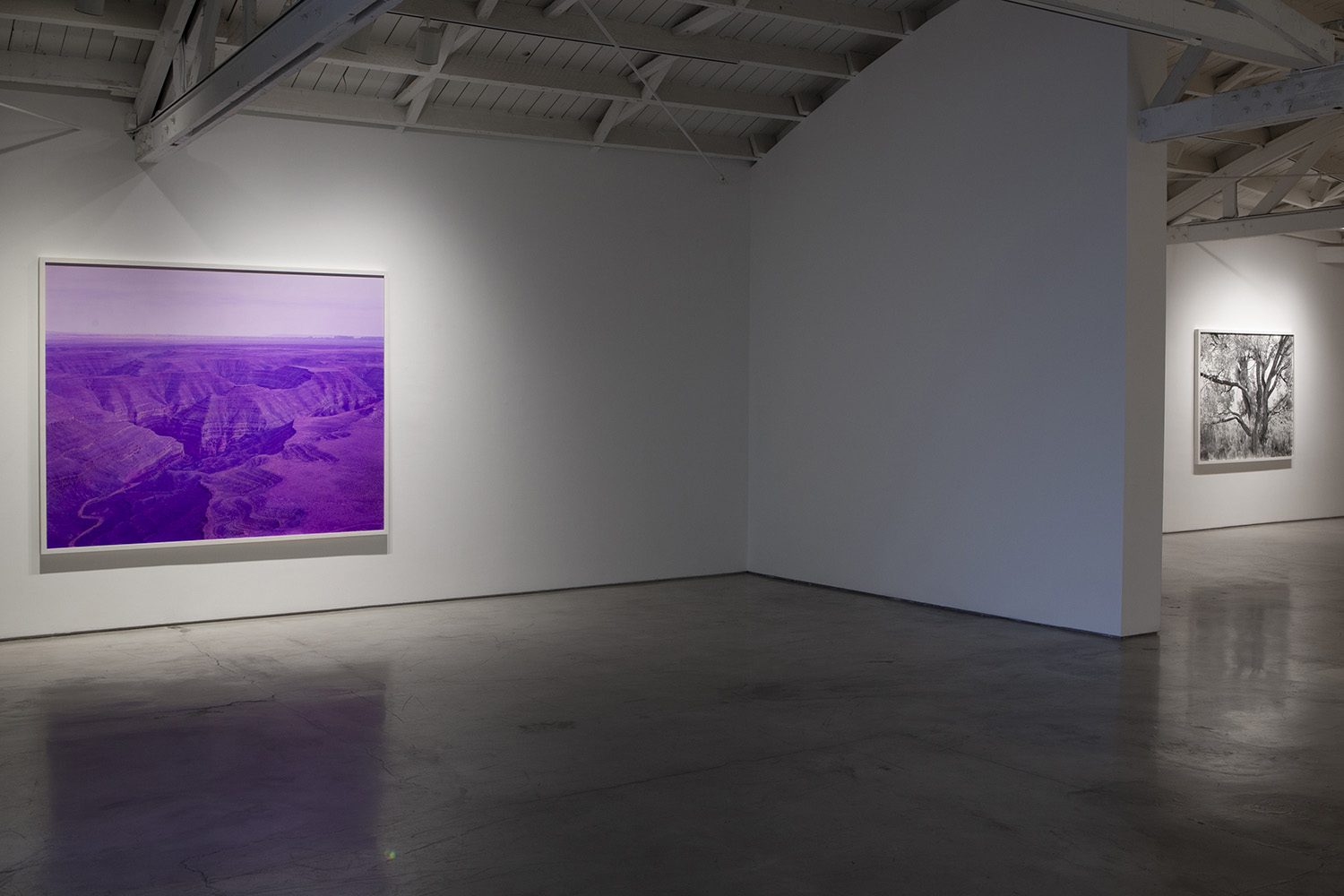
Installation view
Monuments, 2018
Photograph courtesy of Morán Morán
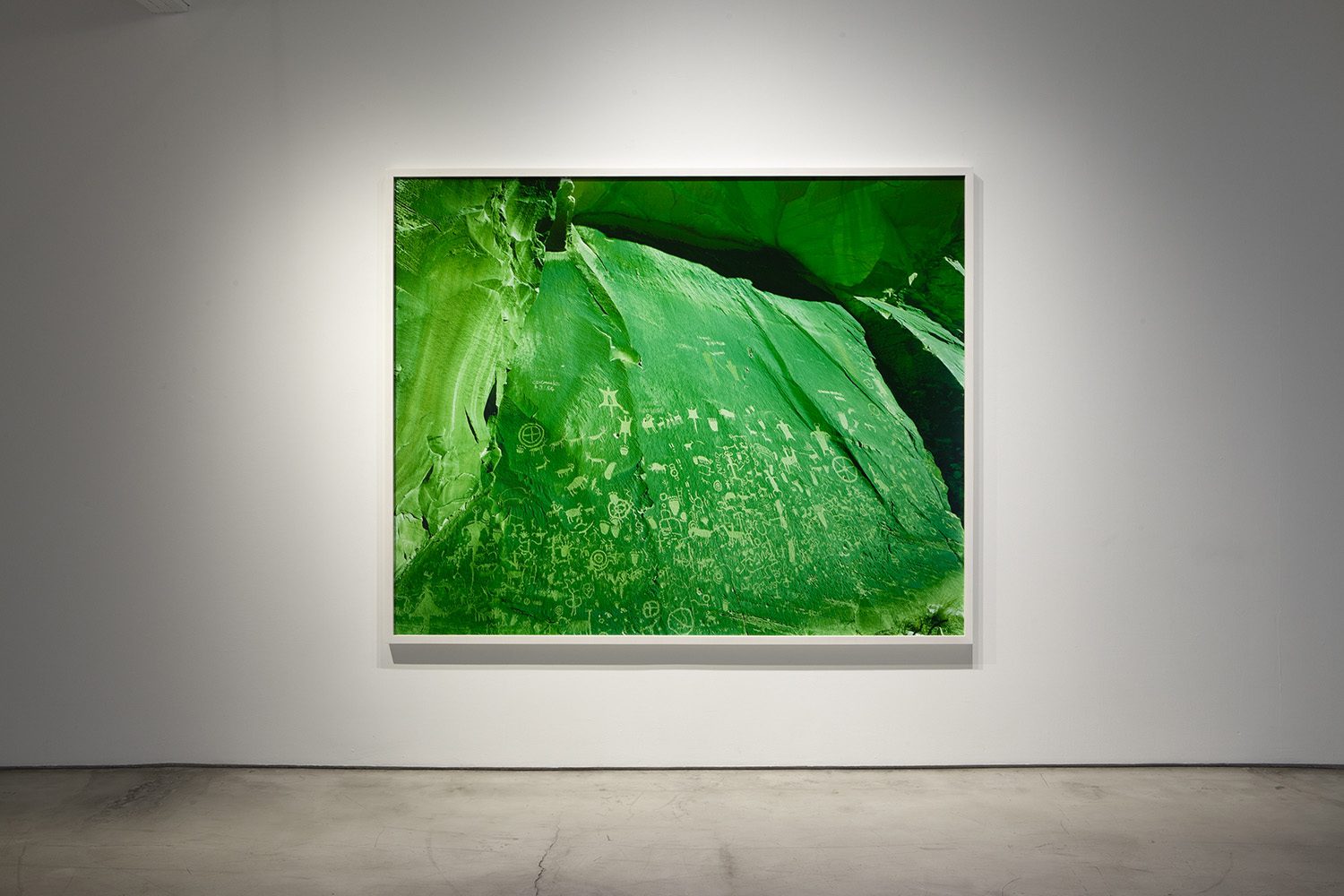
Installation view
Monuments, 2018
Photograph courtesy of Morán Morán
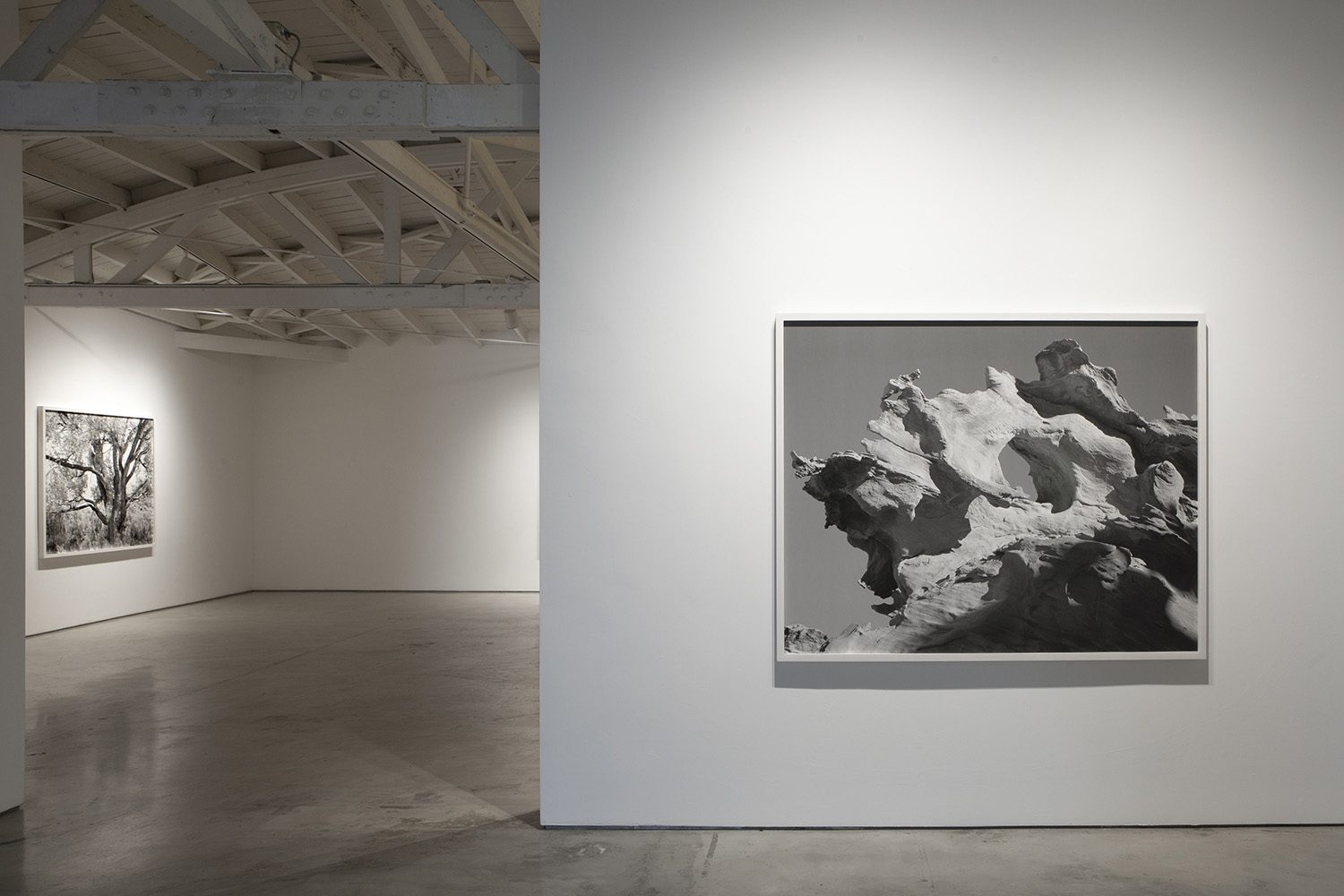
Installation view
Monuments, 2018
Photograph courtesy of Morán Morán
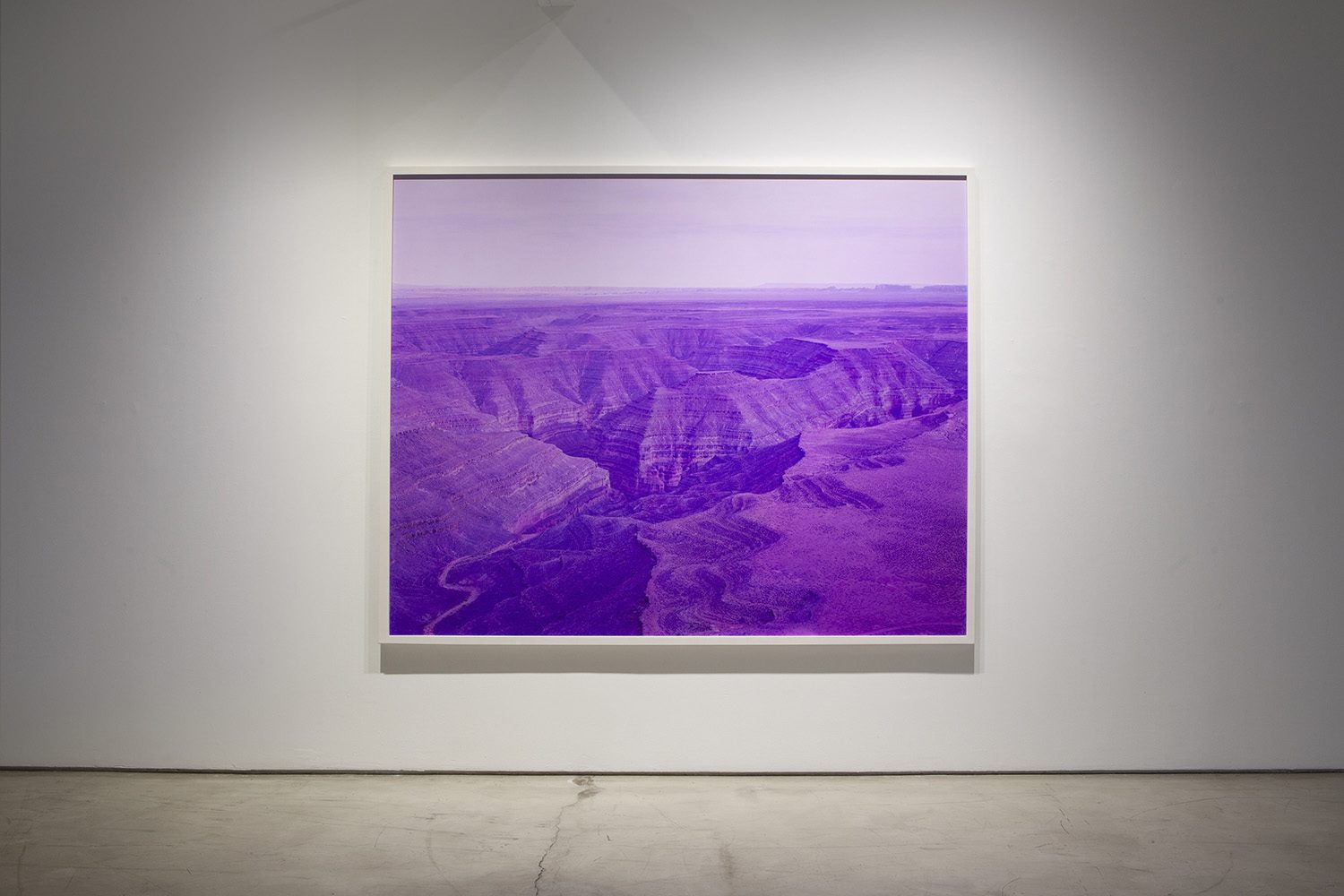
Installation view
Monuments, 2018
Photograph courtesy of Morán Morán
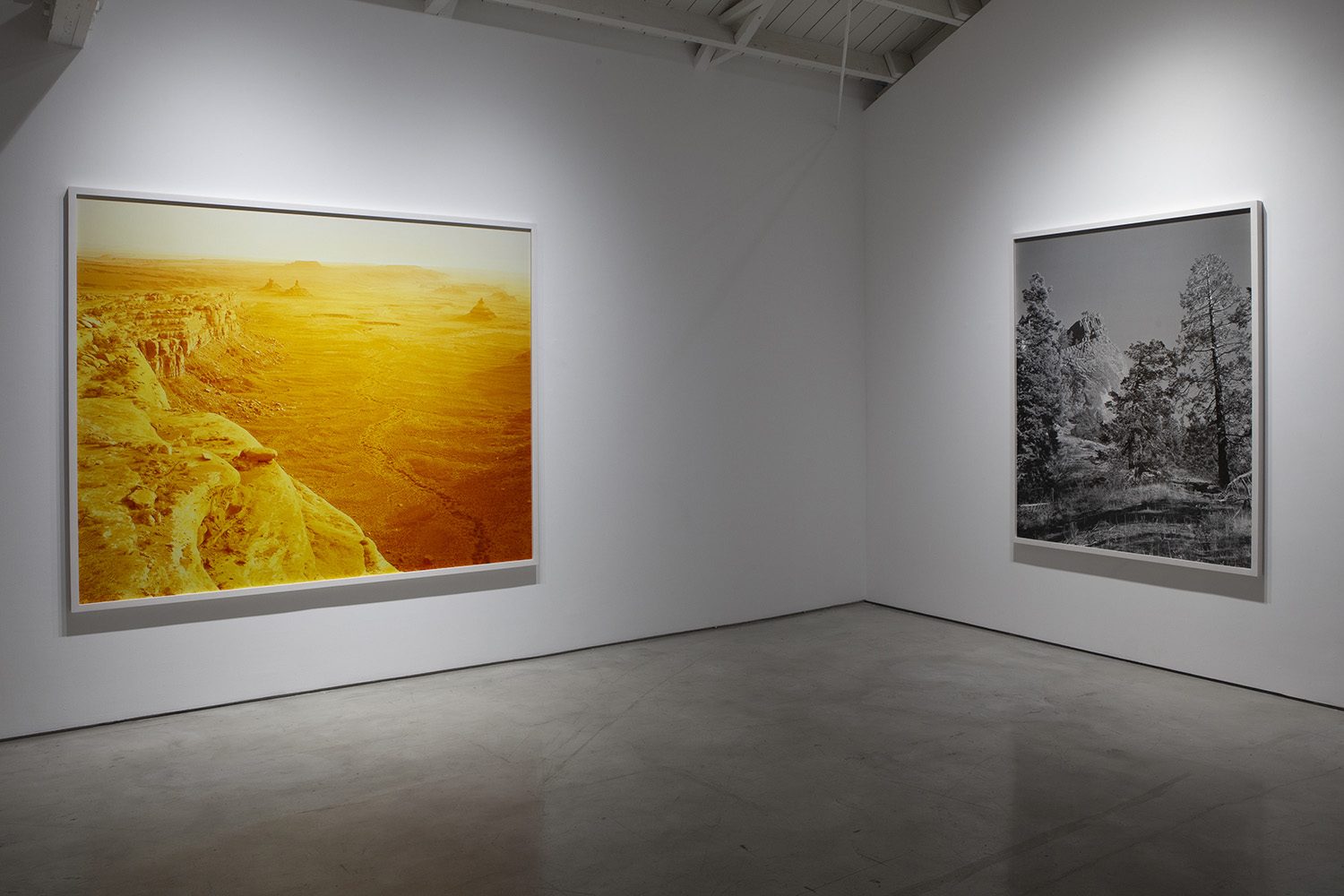
Installation view
Monuments, 2018
Photograph courtesy of Morán Morán
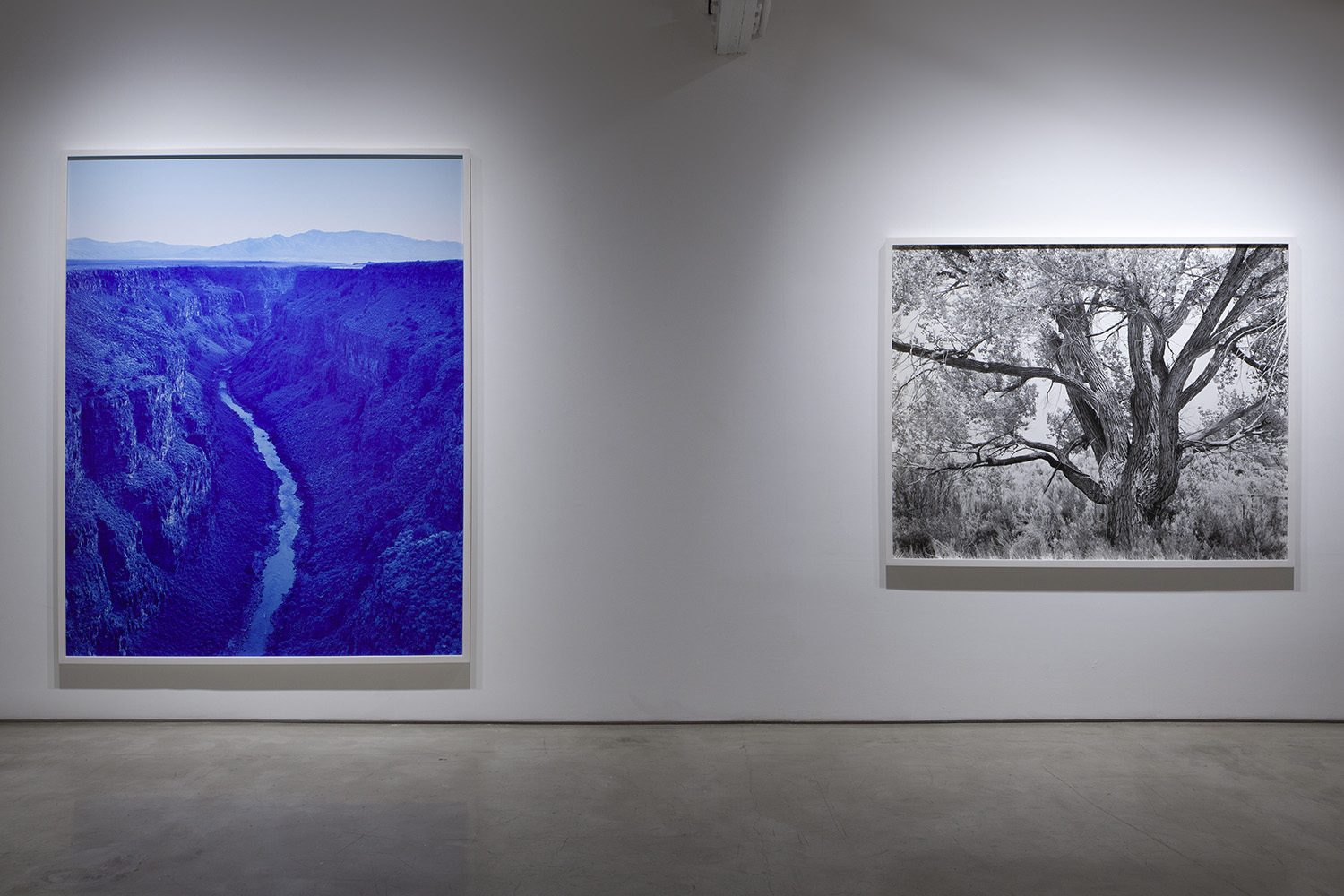
Installation view
Monuments, 2018
Photograph courtesy of Morán Morán
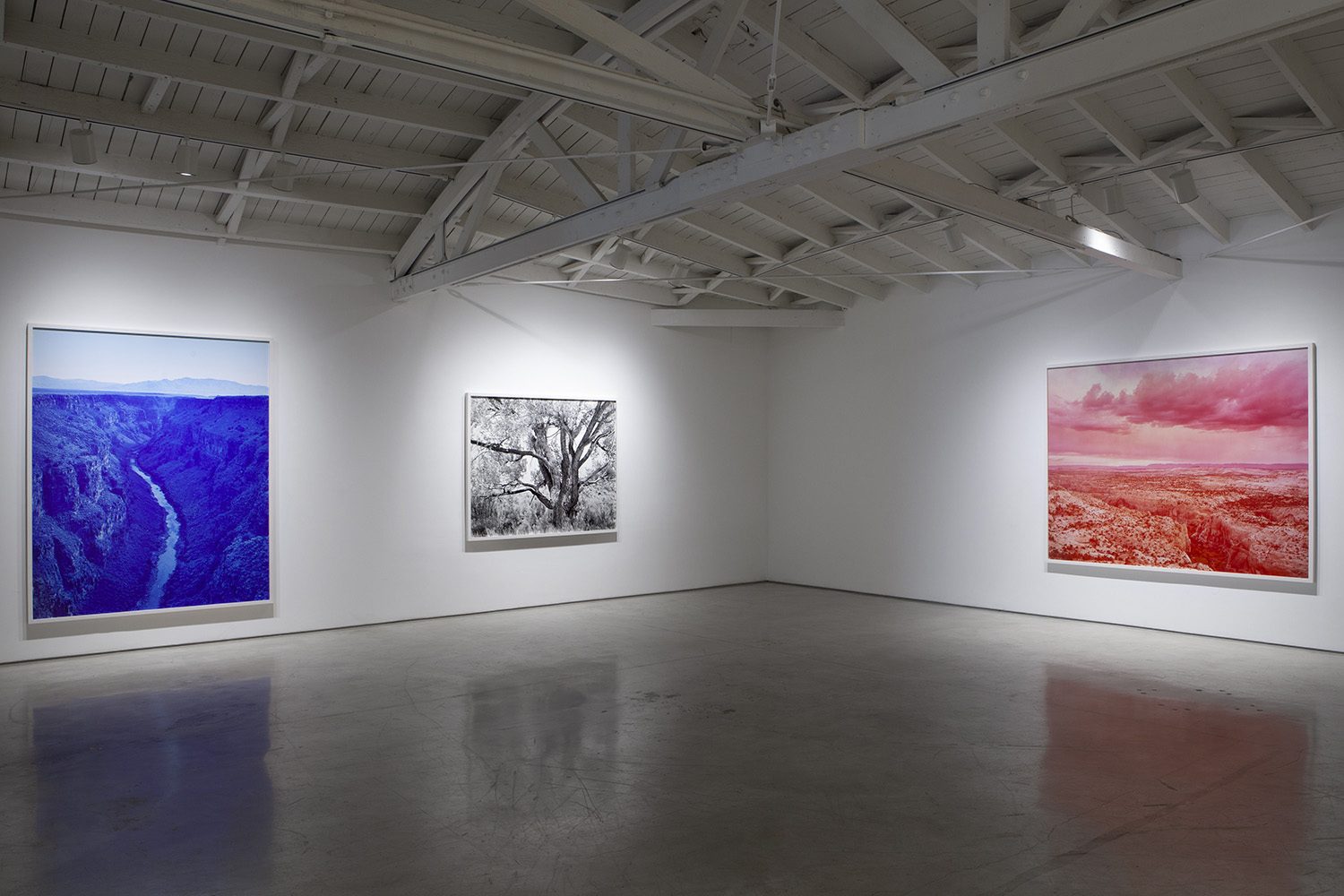
Installation view
Monuments, 2018
Photograph courtesy of Morán Morán
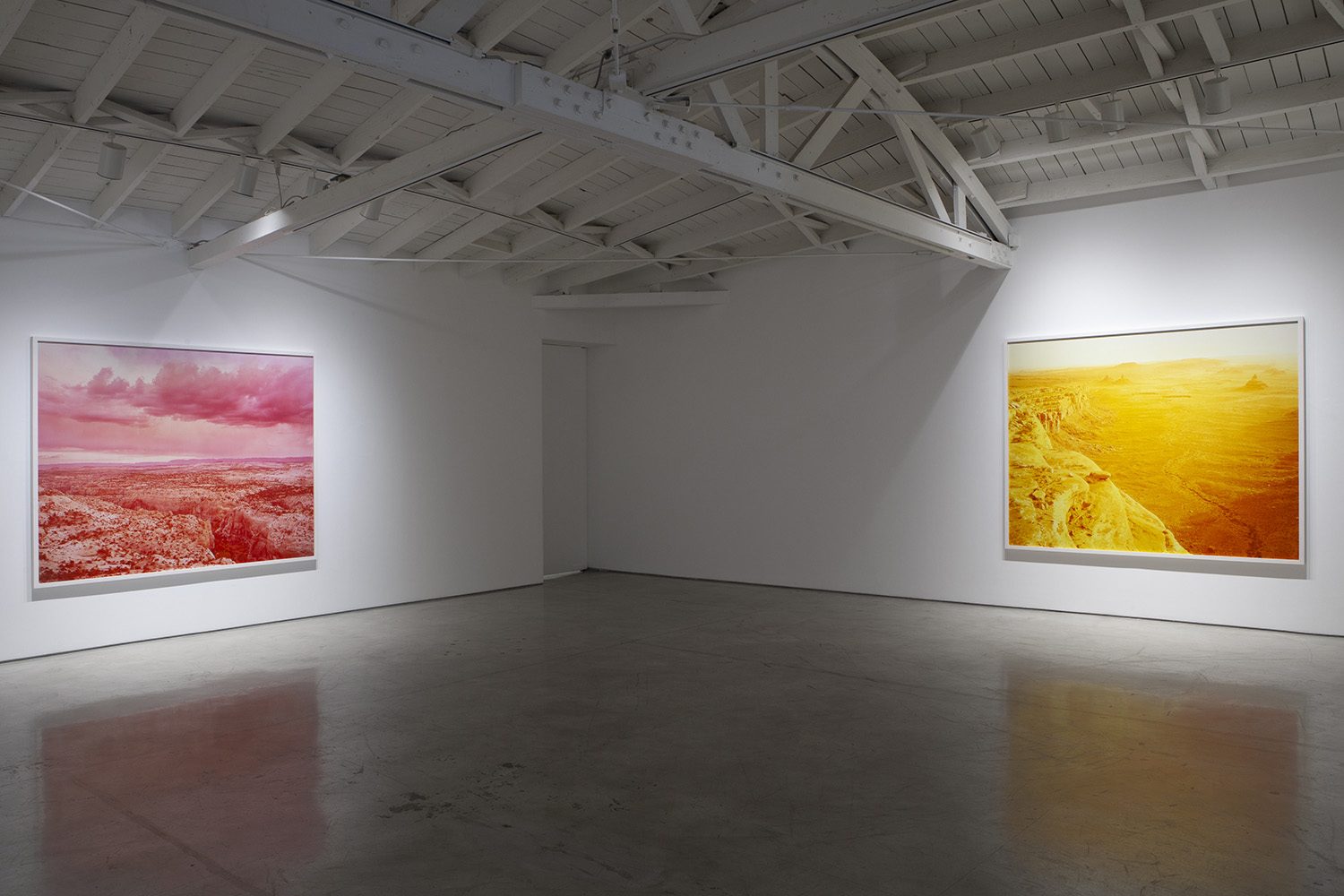
Installation view
Monuments, 2018
Photograph courtesy of Morán Morán
Artworks
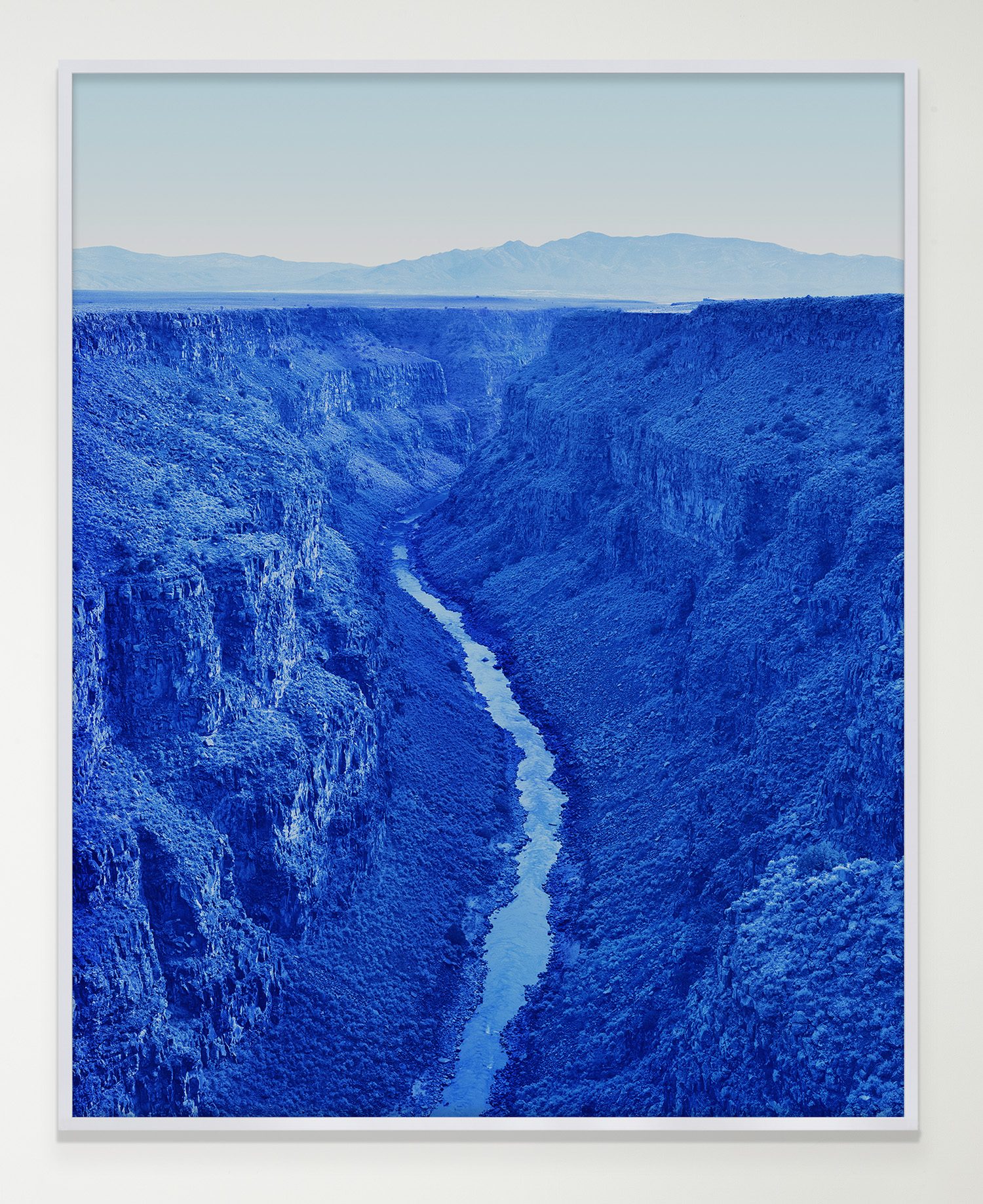
David Benjamin Sherry
Rio Grande Gorge, Rio Grande del Norte National Monument, New Mexico, 2018
Chromogenic print
90.75 x 73 inches, framed
(230.5 x 185.5 cm, framed)
Photograph courtesy of Morán Morán
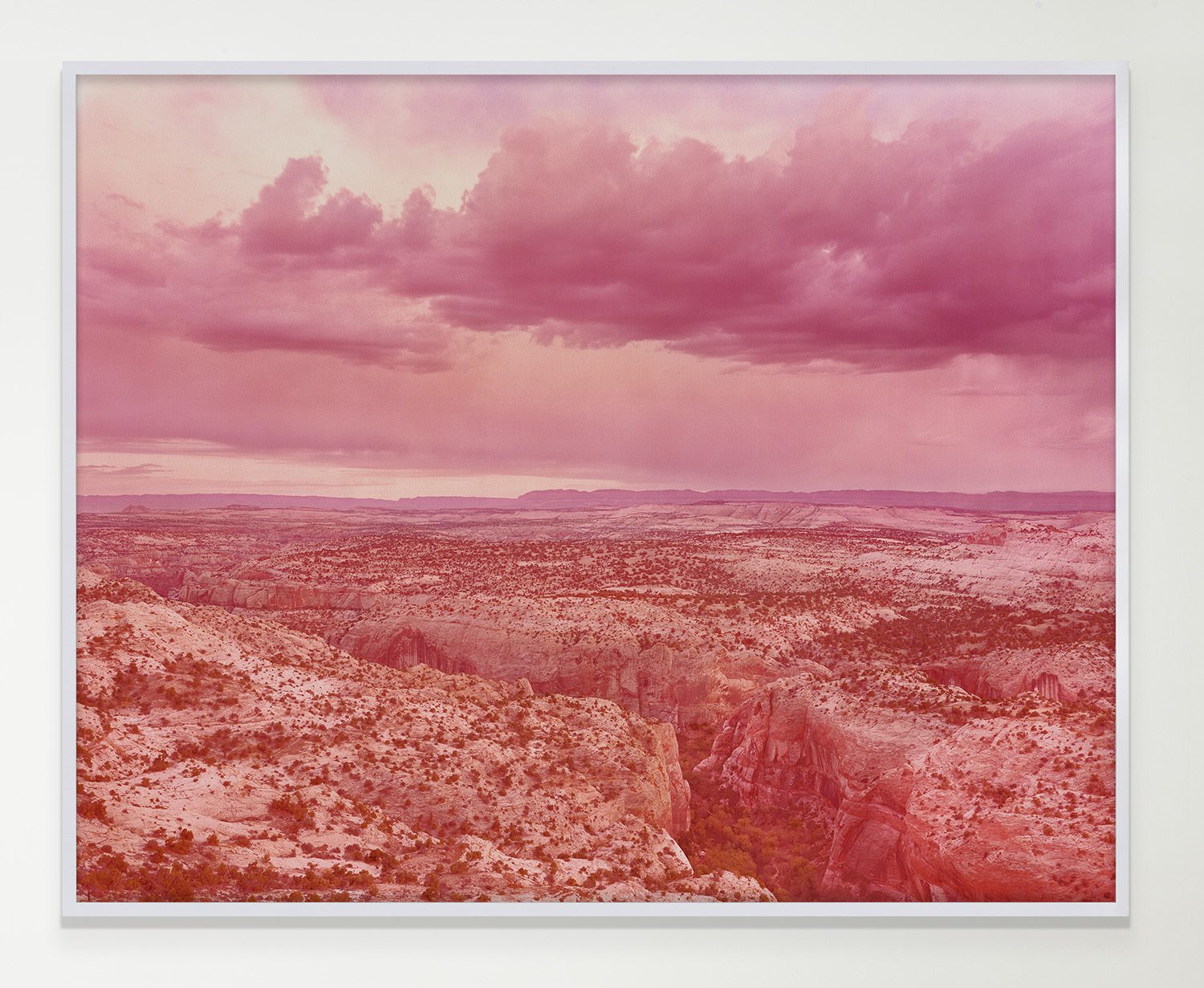
David Benjamin Sherry
Escalante River, Grand Staircase-Escalante National Monument, Utah, 2018
Chromogenic print
73 x 90.75 inches, framed
(185.5 x 230.5 cm, framed)
Photograph courtesy of Morán Morán

David Benjamin Sherry
Little Finland, Gold Butte National Monument, Nevada, 2018
Gelatin silver print
57 x 70.75 inches, framed
(145 x 180 cm, framed)
Photograph courtesy of Morán Morán
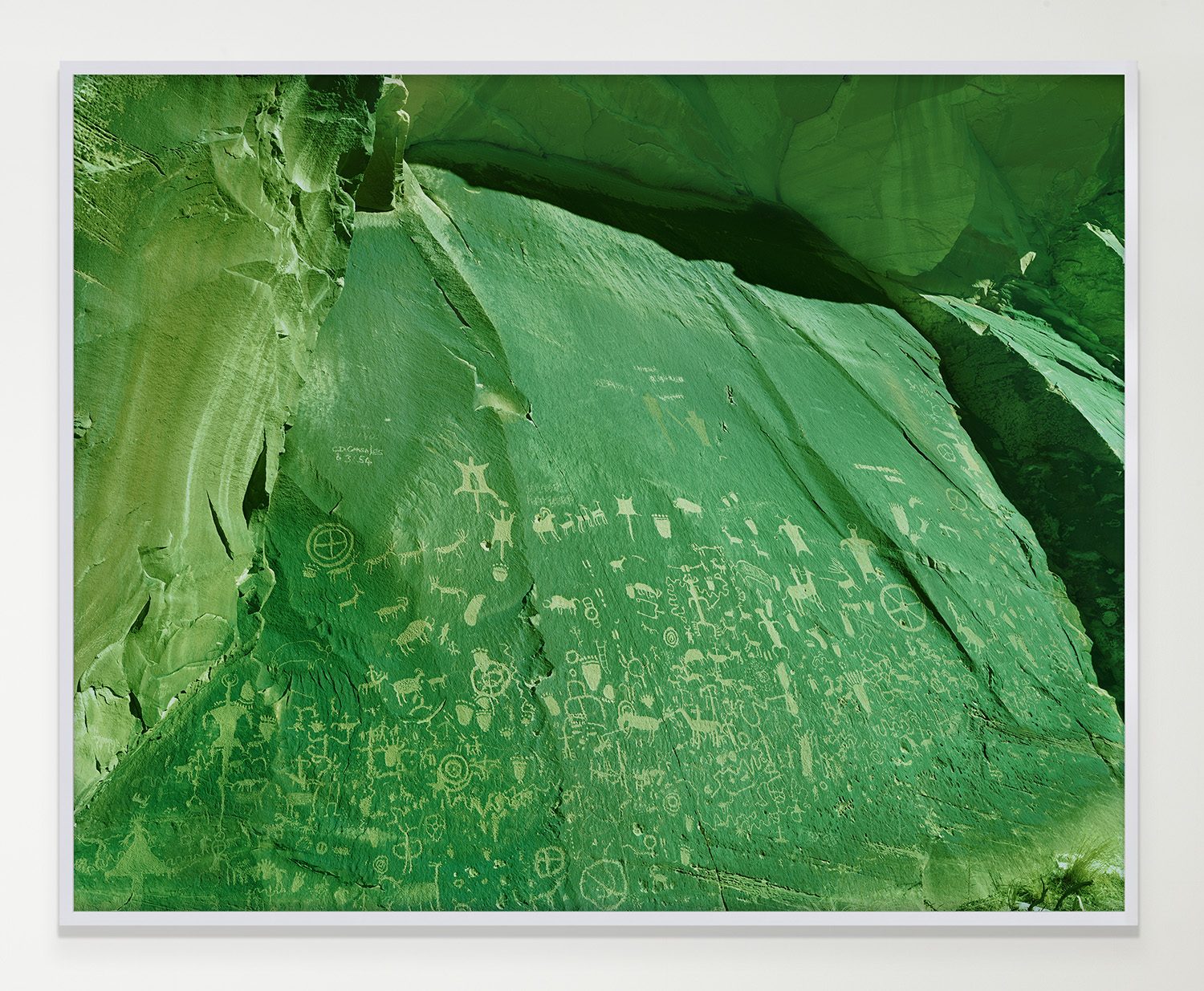
David Benjamin Sherry
Newspaper Rock Petroglyph, Bears Ears National Monument, Utah, 2018
Chromogenic print
73 x 90.75 inches, framed
(185.5 x 230.5 cm, framed)
Photograph courtesy of Morán Morán
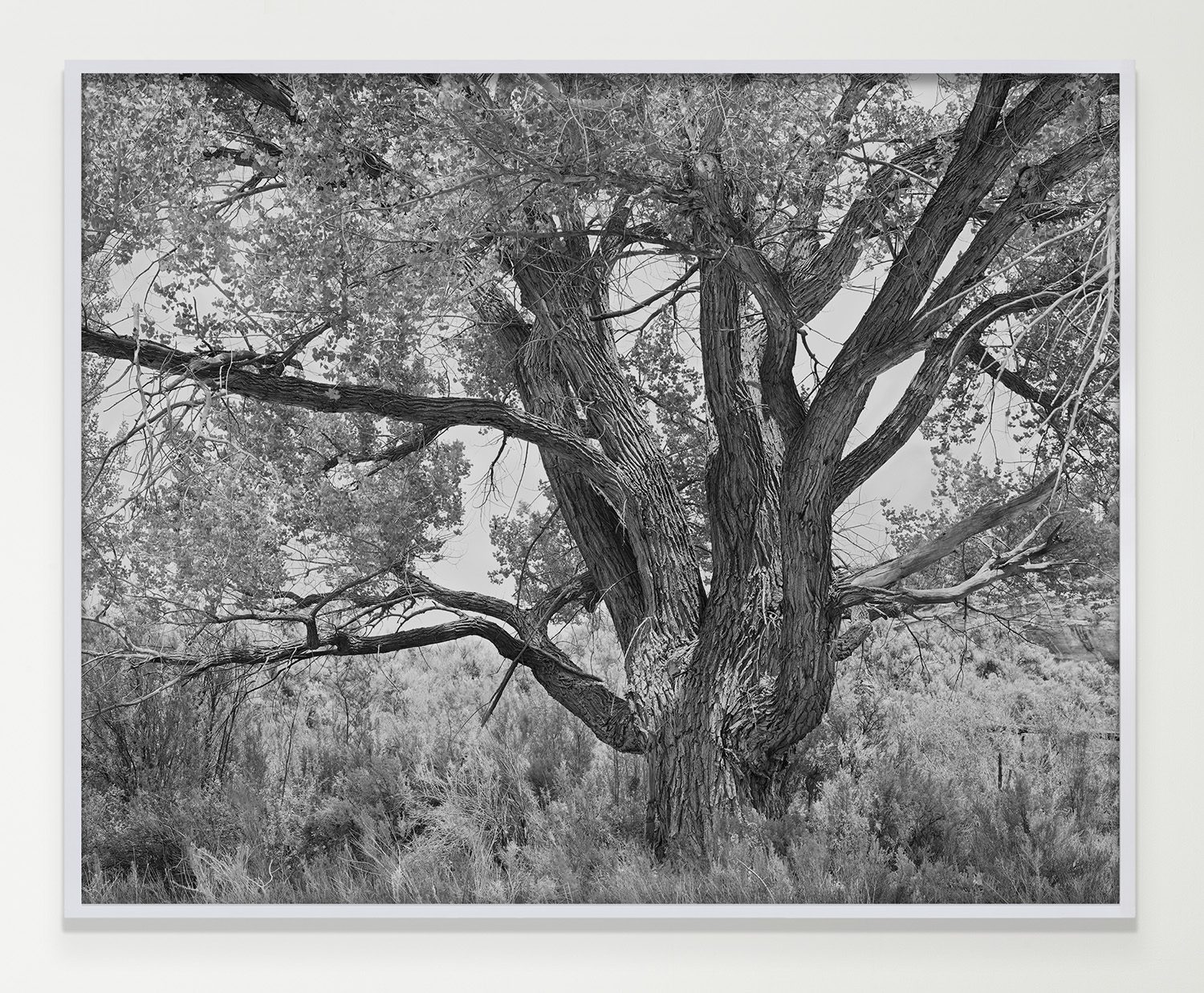
David Benjamin Sherry
Cottonwood Tree, Bears Ears National Monument, Utah, 2018
Gelatin silver print
57 x 70.75 inches, framed
(145 x 180 cm, framed)
Photograph courtesy of Morán Morán
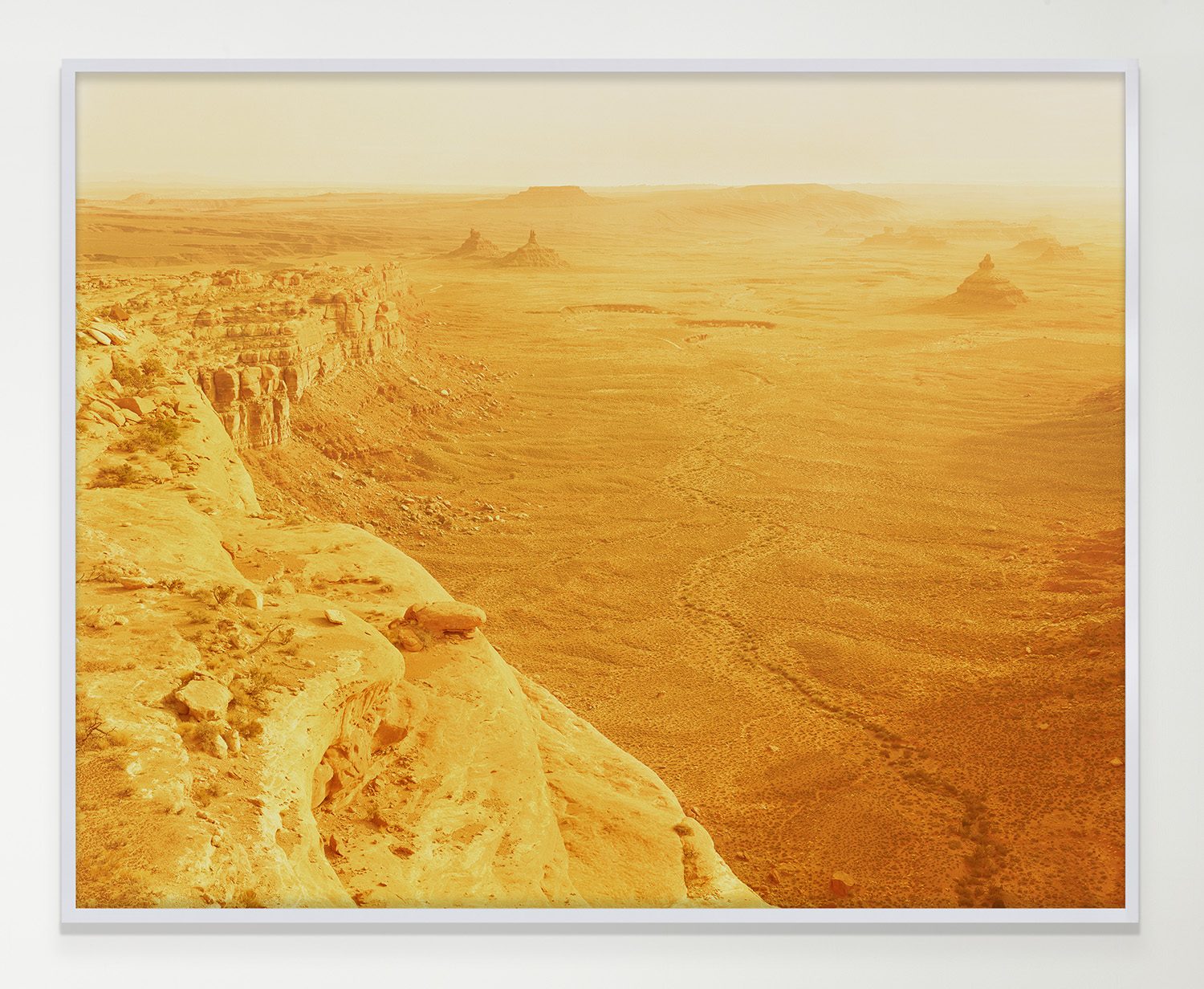
David Benjamin Sherry
Muley Point I, Bears Ears National Monument, Utah, 2018
Chromogenic print
73 x 90.75 inches, framed
(185.5 x 230.5 cm, framed)
Photograph courtesy of Morán Morán
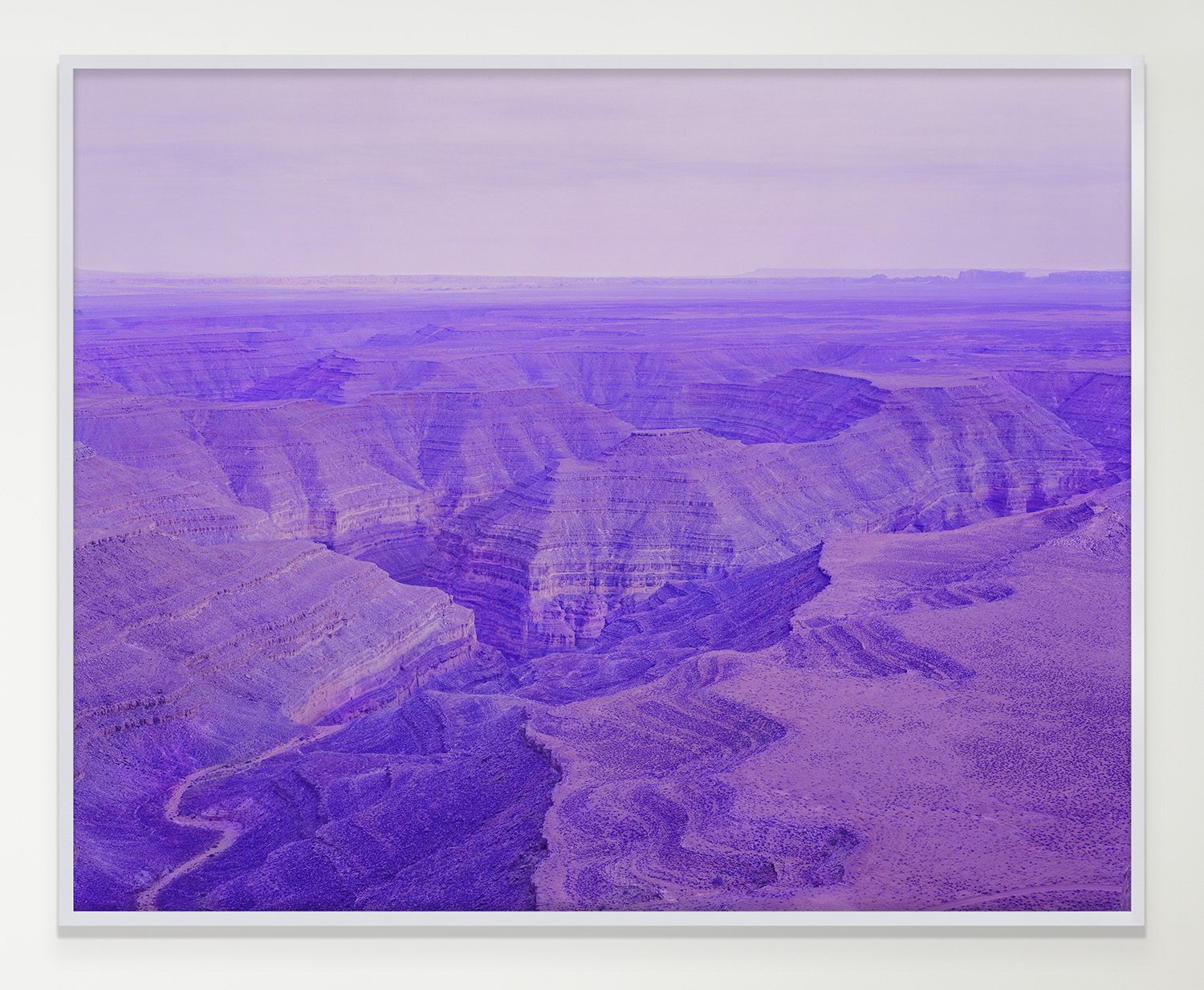
David Benjamin Sherry
Muley Point II, Bears Ears National Monument, Utah, 2018
Chromogenic print
73 x 90.75 inches, framed
(185.5 x 230.5 cm, framed)
Photograph courtesy of Morán Morán
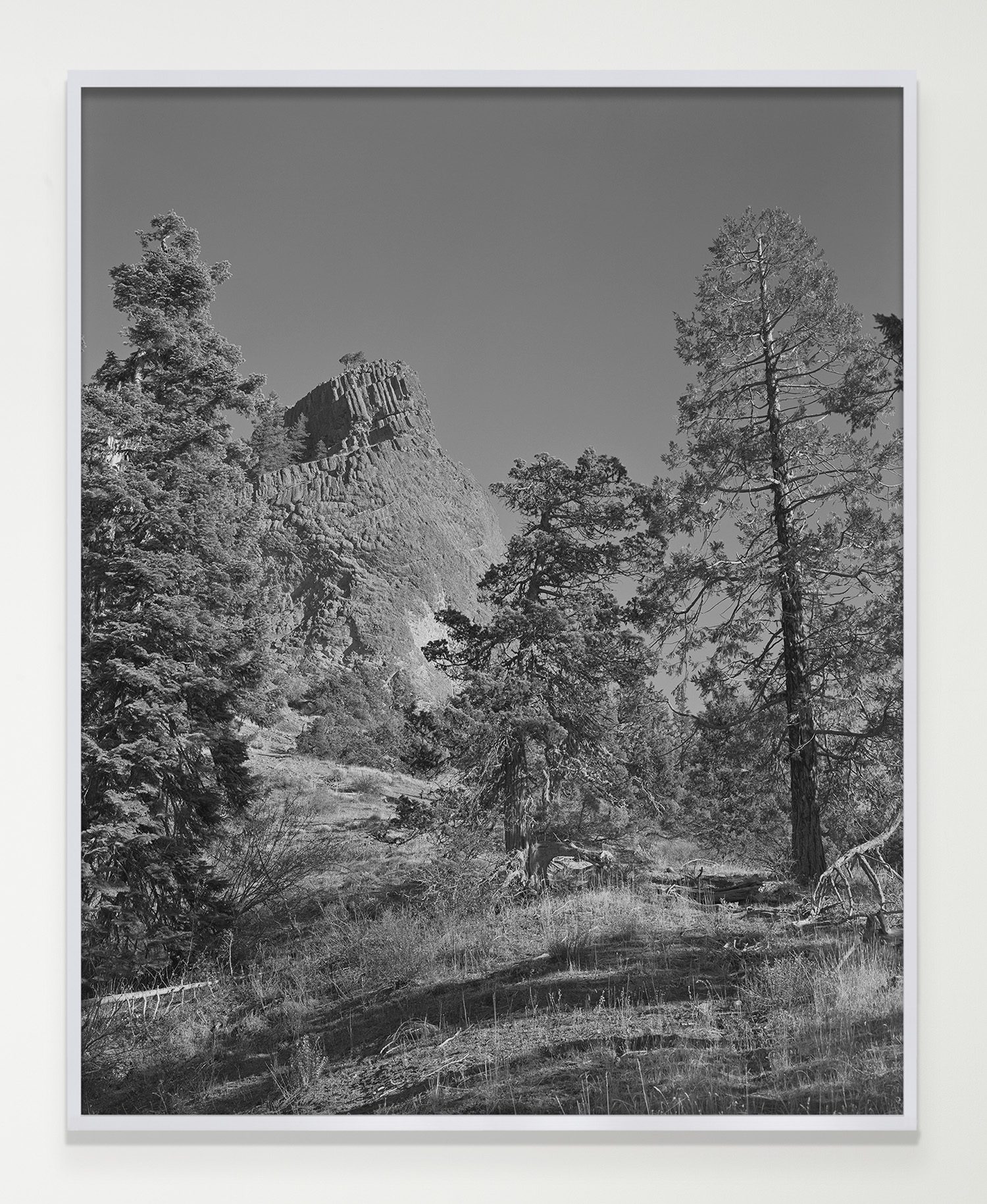
David Benjamin Sherry
Cascade-Siskiyou National Monument, Oregon, 2018
Gelatin silver print
70.75 x 57 inches, framed
(180 x 145 cm, framed)
Photograph courtesy of Morán Morán

